Plants are the focus of most gardens. Combining plants effectively is the key to a good design.
The basic elements of a planting design include bloom color, foliage color, bloom and foliage texture and shape, plant height and width, and the seasonality. Underlying these elements are the soil, water, and temperature requirements of plants selected for the design.
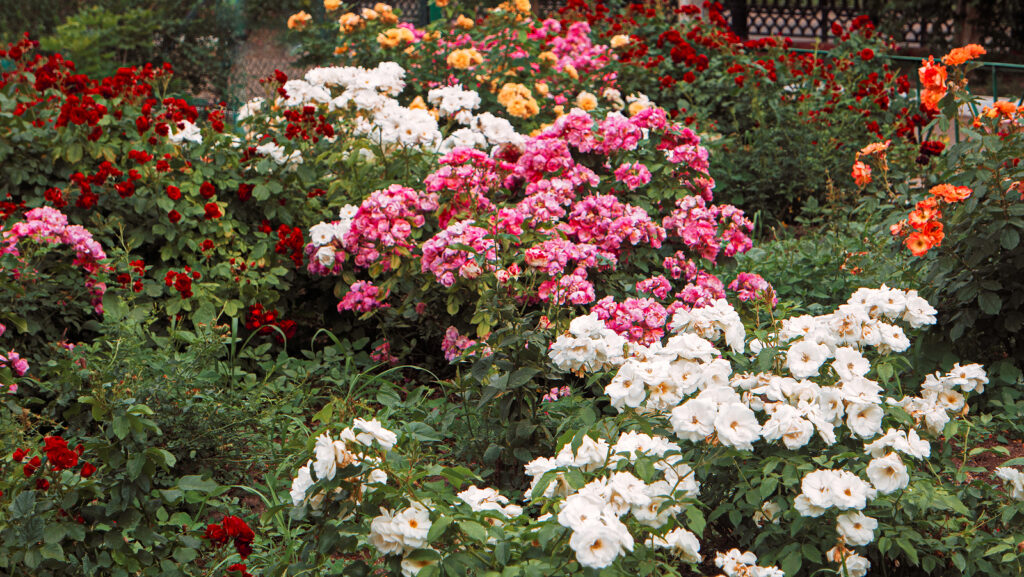
Bloom color
- A cursory understanding of the color wheel is helpful when selecting flowers for the garden. Simply put colors near each other on the color wheel go together; the colors are called complementary. Flowers with bloom colors that are complementary make good neighbors in the garden. Color opposite one another on the color wheel are called contrasting; flowers with contrasting blooms make a bold statement in the garden.
- When thinking of color in the garden, it is a good idea to keep the seasonality of color in mind. Pinks and blues predominate in spring flowers. Maroons, russets, and oranges are more common in autumn. There is a wide range of summer-blooming flowers; flowers of nearly every color bloom in summer.
- White flowers add freshness to nearly all color schemes. White flowers particularly stand out at night.
- Colors can make space feel larger or smaller. Blues and dark reds blend into the distance, creating the effect of depth. Yellows, clear reds, oranges, whites, and bright pinks seem closer.
- Colors can set the mood in a garden. Reds are exciting; blues are soothing; whites are serene; pink and blue together is romantic.
- The color of your home, nearby buildings, and fences need to be considered when choosing a garden color scheme. Pull out the color wheel when choosing flowers; use the color of your house as a guide to choose blooms that are complementary or contrasting.
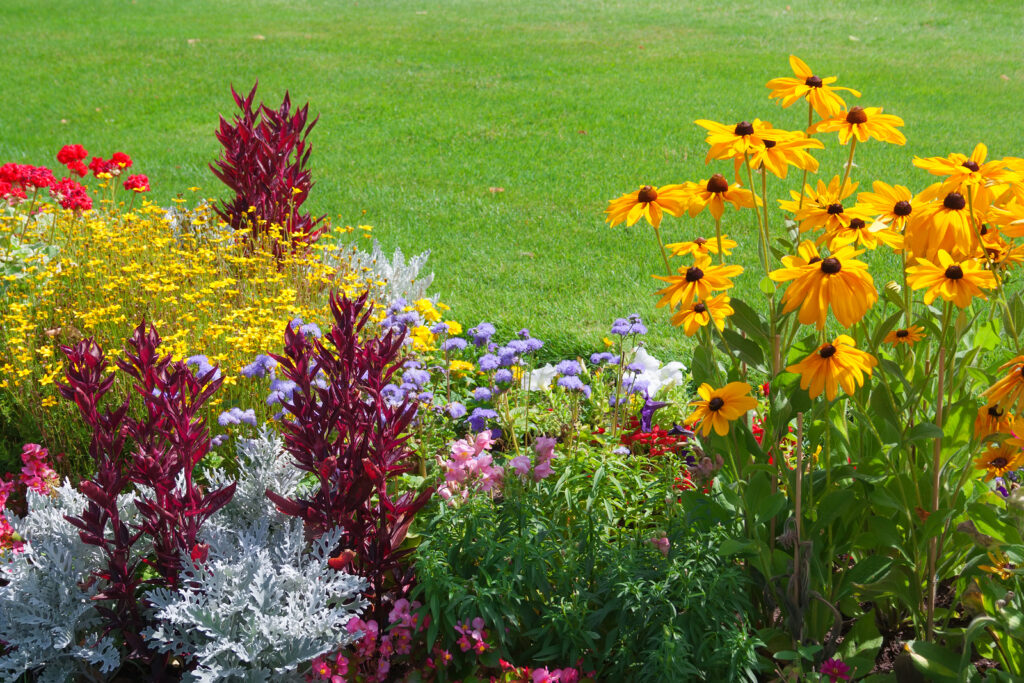
Foliage color
- Consider foliage when designing a garden. Look for leaves that are unusual in shape, color, and texture.
- Green is more than green; green can range from pale gray-green to deep burgundy green to almost yellow-lime green. Look for annual hibiscus, coral bells, ajuga, euphorbia.
- Consider leaves that are not green. Some hostas have nearly blue foliage. Dusty miller, artemisia, and lamb’s ear have gray nearly silver foliage.
- Look for variegate leaves—with yellow stripes or nearly orange strips. Look for cannas and coleus
- Some leaves have margins of white or yellow. Look for euonymus or any cultivars with the botanical name ‘Variegata’ at the end.
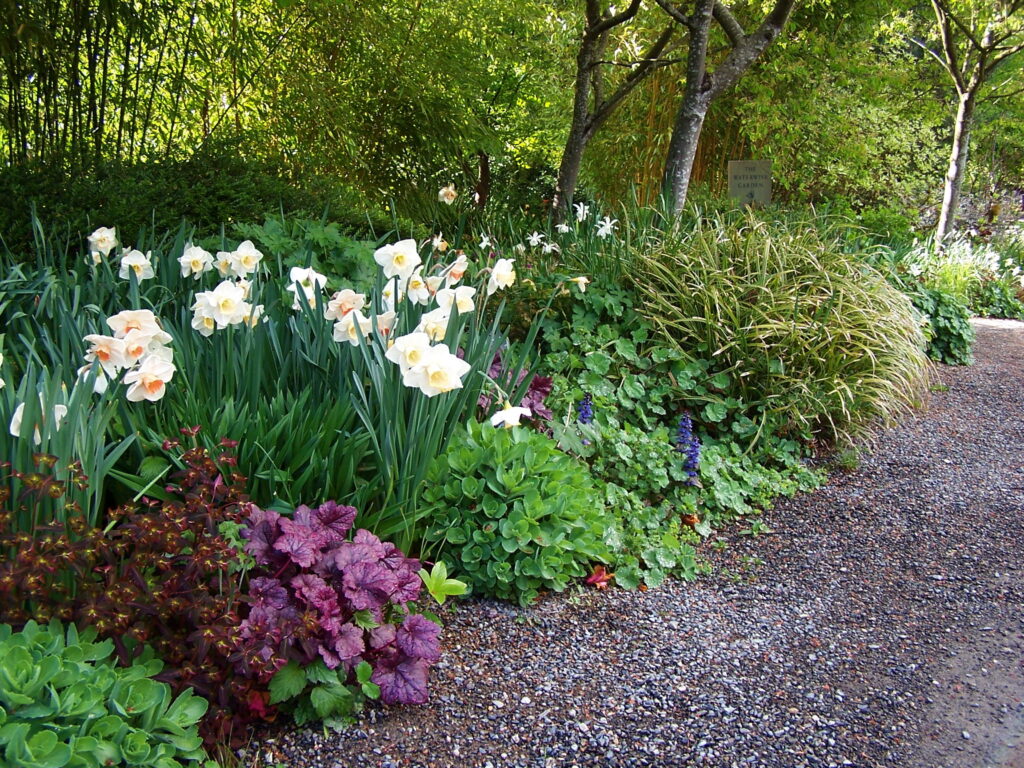
Foliage texture and shape
Leaf size, shape, and texture can be used in planting design.
- Foliage size runs the spectrum from small leaves to very large leaves. Consider leaf size when placing plans in a design.
- Leaf texture can range from small, flat, and smooth to large, folded, and crinkled.
- Leaf size and texture should be used much like color; consider plants with complementary or contrasting leaf size and texture.
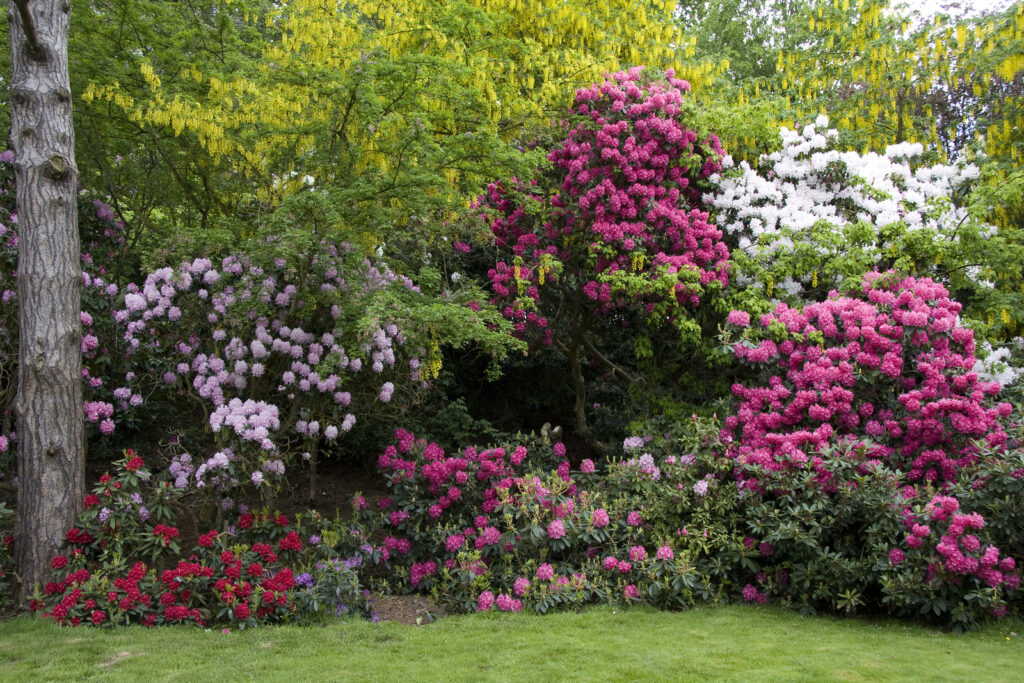
Plant height
Arrange plants by height in a bed or border.
- Tall plants, 4 to 6 feet, should go to the back.
- Mid-height plants in the middle; mid-height plants are 2 to 4 feet tall.
- Short plants, under 2 feet tall, you be set at the front of the border.
- If the bed or border is circular and plants will be viewed from all sides, place tall plants in the center, mid-size plants in the middle, and short plants to the front or edge.
What goes where
Here are a few tips for plant placement in a border or bed:
- Lower, compact plants can be used as edging near a walk or the front of the bed.
- Taller perennials and annuals should be placed at the back of the bed; this will give the bed a sense of rising from front to back.
- Mid-height plants should be placed in the middle of the bed.
- Site plants by bloom or foliage color; complementary or contrasting colors close together. A bed or border would do well to have a predominant color theme.
- Place white flowers in the bed to add freshness and contrast.
- Consider the form of the plant; spiky plants will contract with sprawling plants. Consider the verticality or horizontal nature of the plants’ growth.
- Set plants close together for a full and lush look.
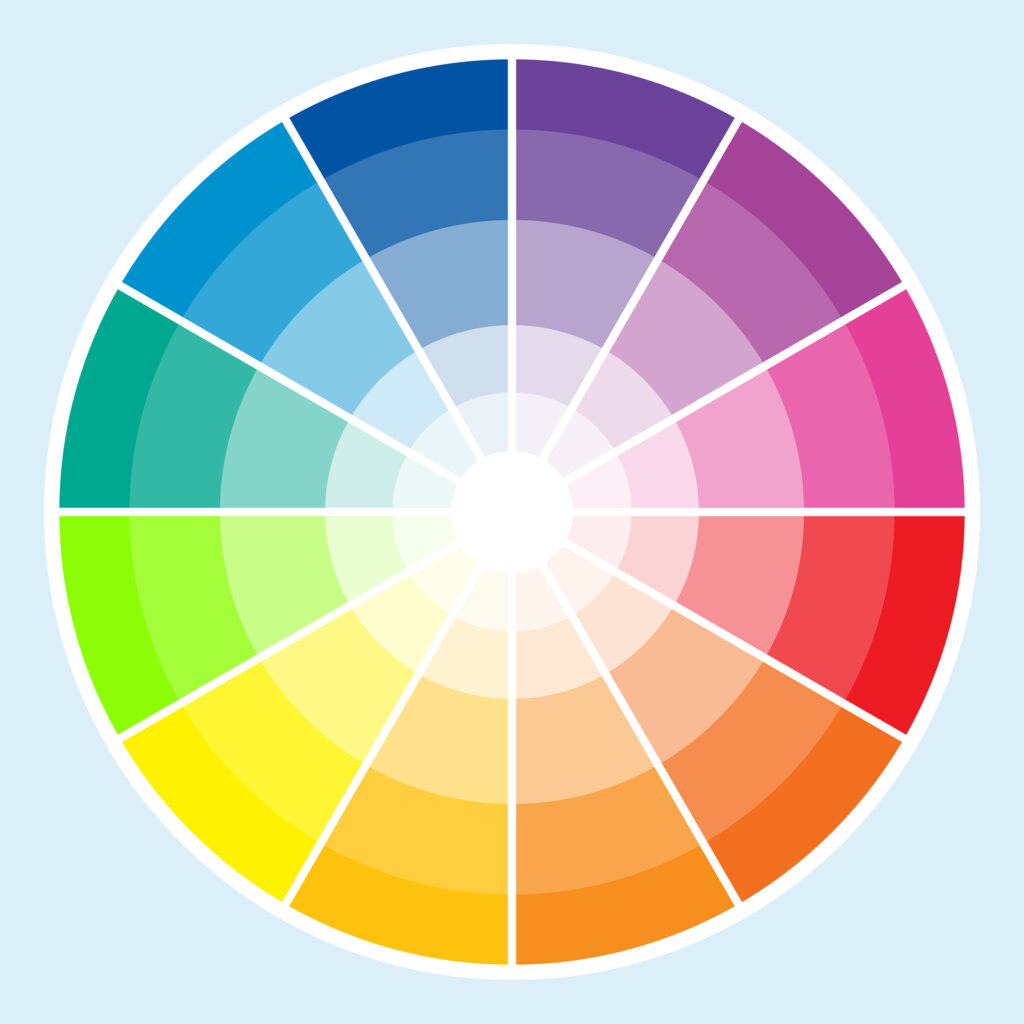
Seasonality
Colors, textures, and shapes change with the season. You may want to start your design planning with lists of plants that will grow in the season you want to highlight the planting.
- Are you planting a spring garden, a summer, a garden, or an autumn and fall garden?
- Which plants can bloom or be of interest in multiple seasons?
- Consider if plants grow and bloom in the cool-time of the year, late autumn, winter, and early spring, or in the warm time of the year late spring, summer, and early autumn.
Growing conditions
Once you’ve made a list of plants you want for your design and have determined they will be of interest in the season you plan to feature them, the last (or perhaps first) step is to determine if they will grow where you want to plant them. What soil, water, and temperature requirements do the plants have? Can they grow where you want them to grow when you want them to grow?
Lists and experience
Considering all of the above, make lists of plants you want to grow and note each plant’s attributes. Will they work? With time and experience, planting design will become second nature to you.















